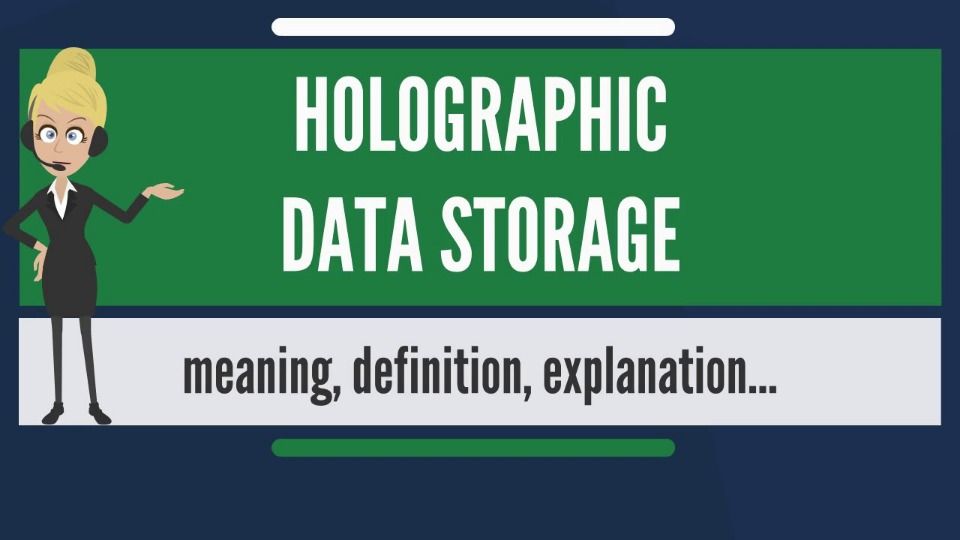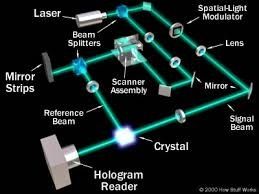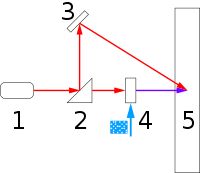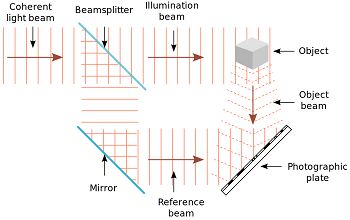[Holographic Data Storage] : Light Just Don't Travel But Can Store Data As Well
Apr 17, 2019 • 16 views
Hello guys,
How are you all doing? Do let me know down in the comment box.
I'm here with a new interesting topic which is the latest technology and yet to become so popular. So I'll start by briefing you about the topic which is all about Holographic data storage.

Now the question arises that what is holographic data storage?
Holographic data storage is a high data storage capacity technology that enables data storage by creating holographic images of each data instance on a supporting medium. It is based on the similar concept of optical storage devices but it enables the use of a single storage volume to store large amounts of data.
Holographic data storage is also known as three-dimensional data storage (3-D data storage).

The use of light to store data is nothing new. Compact discs (CDs) were the first data storage device to use this technology in the 1980s, but it was still a long way off from holographic storage. DVDs and Blu-Ray discs use a more refined version of the same technology used by CDs to read and write data, so really the technology has been inching in this direction.

This concept of optical storage, or the use of light to store data, is the very essence of holographic data storage. This new concept of holographic memory will go beyond writing data on the surface of a disc, but will quite literally penetrate the surface, greatly magnifying the physical area available to store data.
Three-dimensional data storage will be able to store more information in a smaller space and offer faster data transfer times.
Holographic data storage working :

The way a holographic memory system should and would work is where things get a bit tricky.
1) The blue-green argon laser would be fired, and with the help of the beam splitter, the laser beam would be split into two beams known as thesignal beam, which travels straight ahead, and thereference beam, which is directed through the side of the beam splitter.
2) The signal beam would bounce off of a mirror, and travel through the LCD display to the lithium-niobate crystal.
3) The reference beam would approach the crystal from a different path.
4) When the two beams meet, the data (carried by the signal beam) would be stored in a hologram.
This might sound like a long and complicated journey. Complicated, yes, but the time span in which this entire event occurs is just a split second! It isn't something likely to be used in your home by Christmas-time, but the reality of this technology might be closer than we think!
Visual representation of what is occurring during holographic data storage.

Holographic memory offers the possibility of storing 1 terabyte (TB) of data in a sugar-cube-sized crystal. A terabyte of data equals 1,000 gigabytes, 1 million megabytes or 1 trillion bytes. Data from more than 1,000 CDs could fit on a holographic memory system. Most computer hard drives only hold 10 to 40 GB of data, a small fraction of what a holographic memory system might hold.
Holographic data storage technology slightly amends the light angle, wavelength, and storage media location to create different holographs, allowing thousands of holographs to fit onto one storage medium. It works when a light beam carrying data is split into two beams - one carrying actual data and the other serving as a reference beam. Both beams are separately reflected, refracted and passed through a series of processes before being intersected at the storage medium. At the point of intersection, a three-dimensional (3-D) holograph image of the data is created and stored in the medium. The reference beam is again deflected with the same angle onto the storage medium to extract the data.

Holographic data storage can provide companies a method to preserve and archive information. The write-once, read many approaches to data storage would ensure content security, preventing the information from being overwritten or modified. Manufacturers believe this technology can provide safe storage for content without degradation for more than 50 years, far exceeding current data storage options.
Nintendo filed a Joint Research Agreement withInPhase for holographic storage in 2008.
How much you like this thread? Do let me know in the comments section below and please like.
